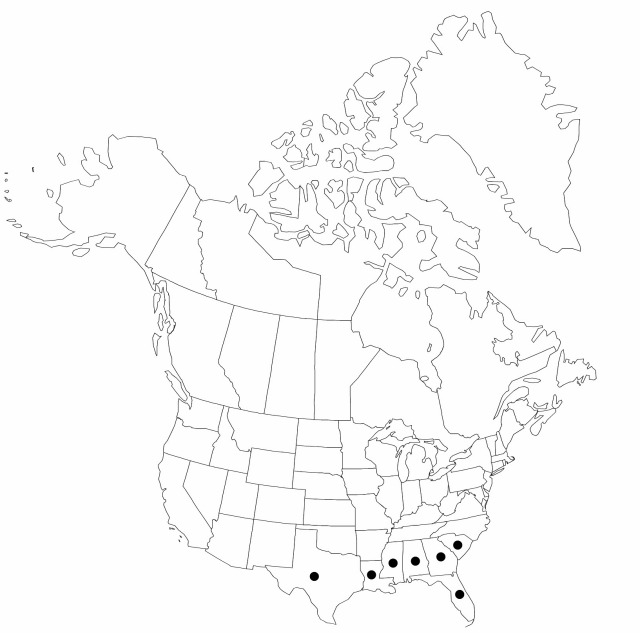Cyperus drummondii
Ann. Lyceum Nat. Hist. New York 3: 437, errata. 1836.
Herbs, perennial, cespitose; rhizomes 0.5–2 cm, often absent. Culms trigonous, 35–170 cm × 2–4.7 mm, scabrid on angles. Leaves 4–12, with readily visible cross ribs especially on abaxial surface, flat to V-shaped, 25–100 cm × 2.4–11 mm. Inflorescences: heads digitate, globose, 1–1.7 cm diam.; rays 3–5, 1–7 cm; 2d order rays absent; bracts 3–5, horizontal to ascending at 30°, with prominent cross ribs, V-shaped, (4–) 11–35 (–48) cm × 1–6.7 mm (longest 1/2 as long as culm); 2d order bracts absent. Spikelets 10–40, oblong to linear-lanceoloid, 5–1.8 × 1.5–2.2 mm; floral scales 18–42, pale grayish green, turning brownish, proximally greenish or brownish, 2-keeled, weakly to distinctly 1-ribbed, proximal 1/2 2-ribbed, ovate, 1.4–1.6 × 0.9–1.4 mm, acute (sometimes mucronulate), apically glabrous, occasionally scabridulous. Flowers: stamens 1–2; anthers 0.8–1.2 mm; styles 0.8–1 mm; stigmas 0.6–0.8 mm. Achenes brown, slightly stipitate, oblongellipsoid (2.4–3.9 times longer than wide), 1–1.2 × 0.3–0.5 mm, apical beak 0.1–0.5 mm, surfaces glabrous.
Phenology: Fruiting late spring–summer.
Habitat: Wet, relatively undisturbed habitats, especially flatwoods, ponds, seepage slopes, coastal prairies
Elevation: 0–200 m
Distribution

Ala., Fla., Ga., La., Miss., S.C., Tex., West Indies, Central America, South America
Discussion
Cyperus drummondii has been treated as a synonym (G. C. Tucker 1994), or a variety (G. Kükenthal 1935–1936), or a subspecies of C. virens (M. F. Denton 1978b). Recent quantitative and field studies (J. R. Carter et al. 1999) provided compelling evidence that specific status is appropriate.
Compared to Cyperus virens, C. drummondii is a taller species of less disturbed habitats and has narrower spikelets, ovate scales, and fewer inflorescence bracts. Cyperus virens and C. drummondii are readily distinguished from other Cyperus species in the United States by their sharply angled, scabrid culms and conspicuously septate leaf blades.
Selected References
None.
Lower Taxa
"shortened" is not a number.
